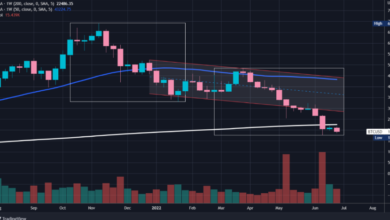Cyber Threats in 2025: What Businesses Should Prepare For

As we approach 2025, businesses must recognize the escalating complexity of cyber threats that lie ahead. The landscape is shifting, with advanced ransomware and AI-driven phishing tactics poised to exploit both human error and vulnerabilities within supply chains. To navigate these challenges, organizations will need to adopt proactive strategies, from comprehensive employee training to embracing innovative cybersecurity technologies. However, the question remains: what specific measures will be most effective in safeguarding against these evolving threats, and how can businesses ensure they stay one step ahead of potential adversaries?
Evolving Ransomware Tactics
Evolving ransomware tactics are reshaping the cybersecurity landscape, presenting increasingly sophisticated challenges for organizations.
The ransomware evolution manifests through diverse attack vectors, including phishing, exploitation of vulnerabilities, and supply chain compromises.
As cybercriminals adapt their methodologies, businesses must enhance their defenses and adopt proactive measures, ensuring resilience against these dynamic threats that undermine organizational integrity and threaten individual freedom in the digital realm.
See also: Electric Vehicles: Advancements and Challenges in 2025
AI-Driven Phishing Attacks
How have advancements in artificial intelligence influenced the landscape of phishing attacks?
AI-driven strategies utilize machine learning to execute targeted deception with unprecedented efficiency. As such, businesses must remain vigilant against increasingly sophisticated threats, including:
- Personalized phishing emails crafted from data analysis
- Automated systems that adapt to user behaviors
- Enhanced impersonation techniques that exploit trust
These developments necessitate robust defense mechanisms and employee training.
Insider Threats and Human Error
While AI-driven phishing attacks continue to pose significant threats to organizations, insider threats and human error remain critical vulnerabilities within the cybersecurity landscape.
Effective employee training programs and stringent access controls are essential in mitigating these risks.
Supply Chain Vulnerabilities
Supply chain vulnerabilities represent a critical area of concern in modern cybersecurity frameworks, as interconnected networks can amplify the impact of a single breach.
To mitigate risks, organizations should prioritize:
- Supply chain mapping to identify potential weak points
- Conducting regular third-party audits to ensure compliance
- Implementing robust incident response plans for rapid recovery
Addressing these areas enhances resilience against evolving cyber threats.
Conclusion
In conclusion, as businesses prepare for the cyber threat landscape of 2025, prioritizing proactive measures will be essential. While some may argue that traditional security protocols suffice, the evolving sophistication of threats necessitates a reevaluation of current strategies. Emphasizing employee training, implementing stringent access controls, and investing in advanced technologies will enhance resilience against AI-driven attacks, ransomware, and insider threats. A comprehensive approach, including collaboration with cybersecurity experts, will fortify defenses against emerging vulnerabilities in the digital environment.



